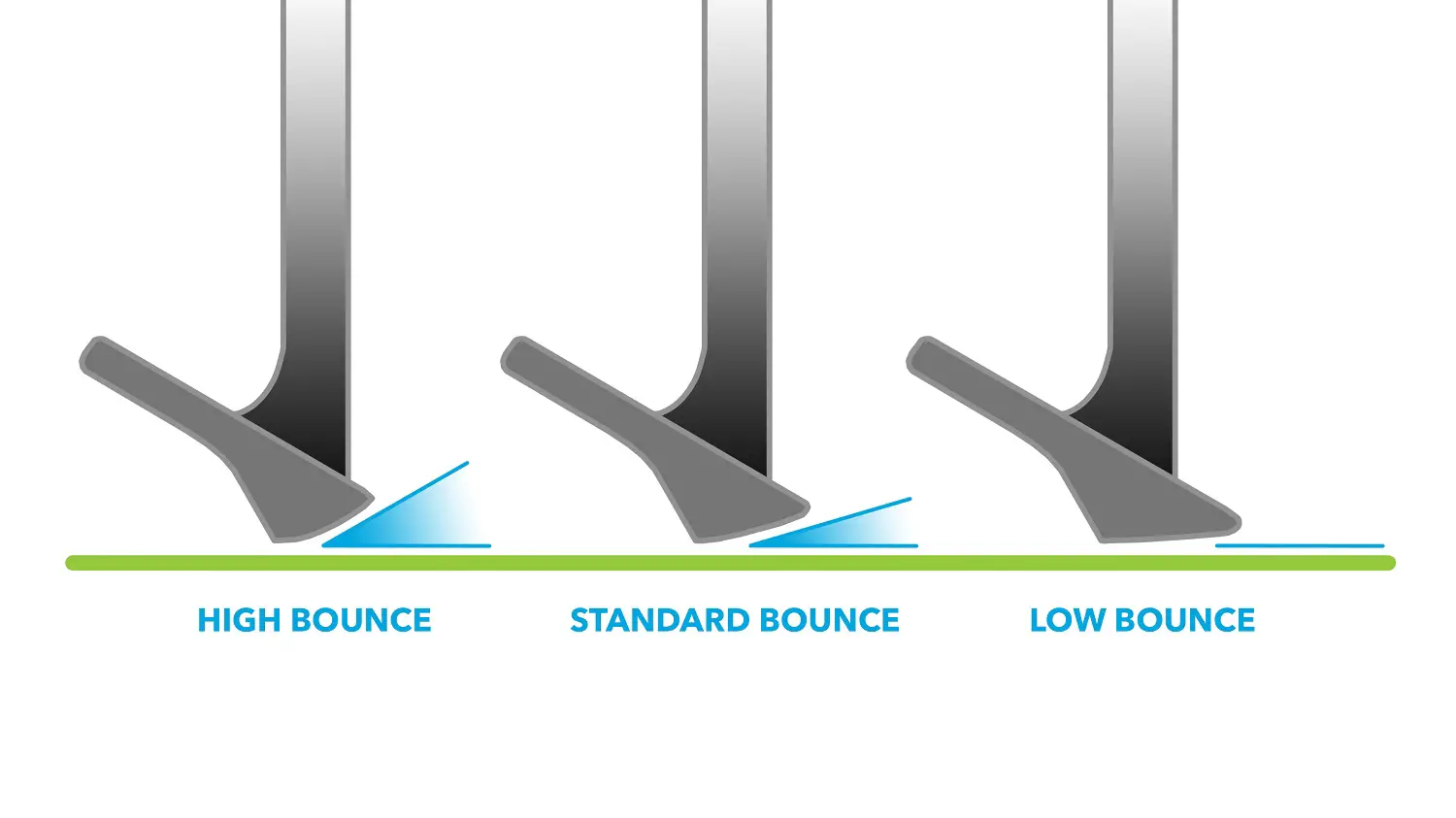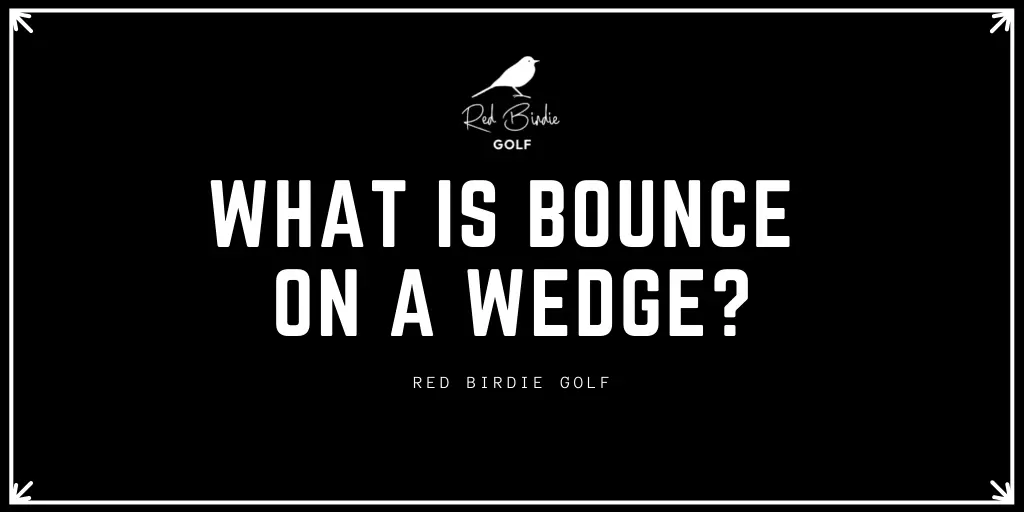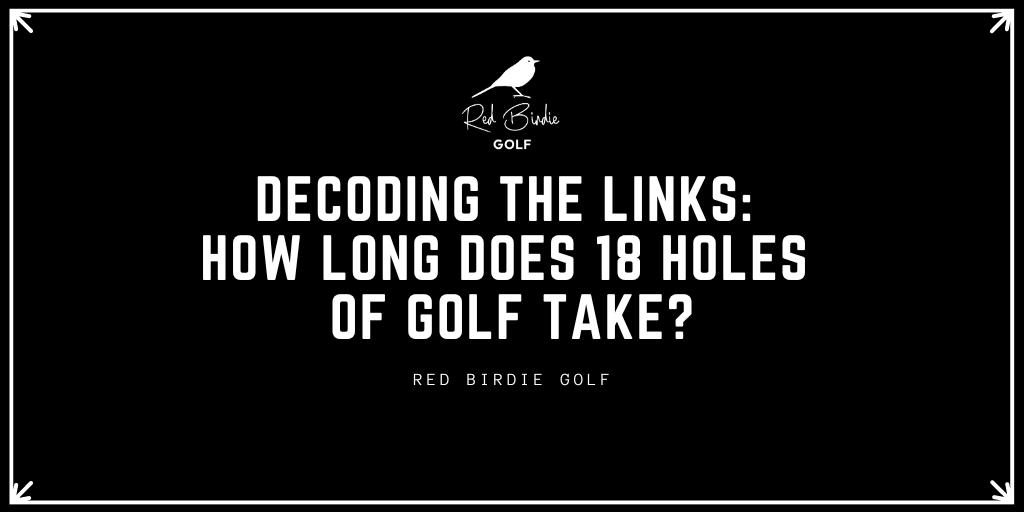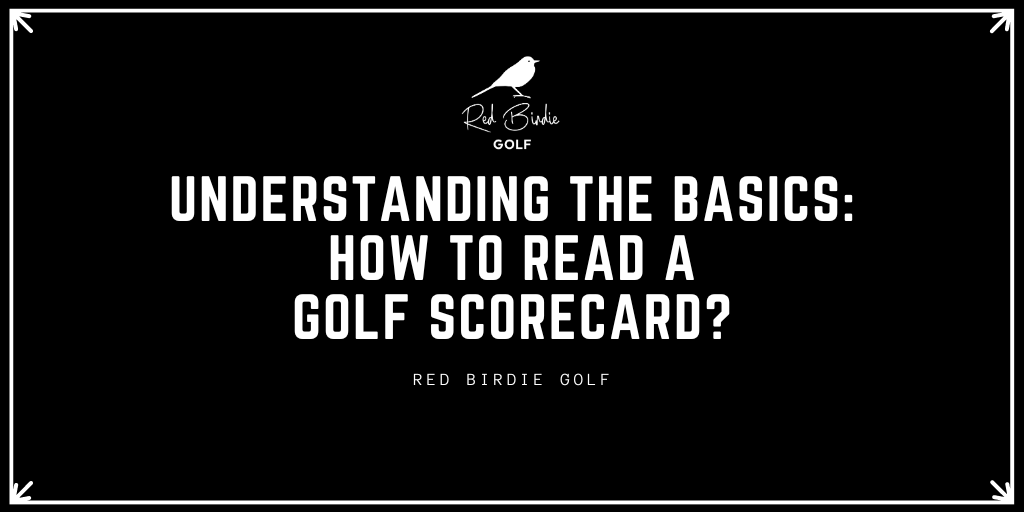Other than the technology that you find in a driver, wedge technology is as advanced and specific as any club you will find. As wedges have grown in importance, and number, so has the research and development and subsequent technology that comes along with it. Wedge bounce, or bounce angle, is an important aspect of wedge technology. Many golfers hit the ball “heavy” with their wedges, but playing a wedge with enough bounce will allow you to cut through the turf and make excellent contact with the ball. The following is a more in depth description of proper wedge bounce in your golf wedges and why it is important to match your golf swing with the bounce you need.
Wedge Bounce Explained
Wedge bounce, or bounce angle, is most easily understood as the angle between the ground and the sole of the club when the club is being vertically at address. This is the area that hits through the ground at contact and is aptly referred to as “bounce” because the club bounces through the surface at impact. The point of “bounce” is to prevent the leading edge of your club from digging into the ground at impact so that you can make direct and solid contact with the ball. The greater the wedge bounce degree, the higher the leading edge is off the ground at address. Bob Vokey, one of the greatest wedge designers in the world, is quoted as saying, “Bounce is your friend” because it provides you with forgiveness on your wedge shots and helps you to make solid contact with the ball even if your swing is a little off. If you do not have the right bounce, there is a greater chance that your club will get stuck in the grass, sand, or dirt and it will cause your swing to decelerate, losing spin, speed, and accuracy.
Low Bounce Wedges
Low bounce wedges are wedges with a bounce angle of 6-degrees and under. They tend to be the most difficult to use but also the most versatile in terms of shot-making. They are also ideal for players who “sweep” the ball with their swing, take smaller divots, and play on firmer course conditions with coarse sand in the bunkers. They are great for flop shots, but when they are played with a square face angle, they are more difficult to hit with little room for error. When they are hit correctly, however, they tend to produce cleaner hits with maximum spin.
Mid Bounce Wedges
Mid bounce wedges have a bounce angle of between 7-degrees and 10-degrees. They are great around the green and provide ideal trajectory and distance control. These wedges are equally good at square angle shots and open face shots and can apply to the widest variety of course conditions and layouts. They favor players with moderate attack angles and a neutral swing style. Mid bounce wedges fit the majority of golfers regardless of skill level.
High Bounce Wedges
High bounce wedges have more than 10-degrees of loft which means the leading edge of the club sits higher on the ground when the shaft is vertical. If your club often digs into the ground and you take big divots consistently, a high bounce wedge is for you. They are also good for softer course conditions and fine/coarse sand in deep bunkers. If you have a steep angle of attack or have trouble hitting square-face shots consistently, then a high bounce wedge could help your game. Generally higher handicap players find these wedges easier to hit.
Consider Your Loft, Bounce, And Grind Options
Your bounce angle does not exist in a vacuum. What that means is that whatever bounce angle is written on your club actually changes depending on what type of shot you are hitting, how you are setting up at address, and even the sole grind that you chose for your wedge can affect your bounce angle.
Even before choosing your bounce angle, the first thing you should decide is the loft that you want your wedges to have. The loft of a wedge is simply the angle created between the face of the wedge and an imaginary vertical line from the ball to the sky. When all else is equal, the higher the loft, the more height you get on the ball. Most wedges come in PW, SW, AW, and LW with different degrees of loft associated with each wedge.
After choosing your lofts, then you choose the bounce angle you want on your wedges, finally moving on to sole grind options. Sole grind is the additional shaping that club designers use around the heel and toe of the club. Sole grind options can be course and condition specific, but they can also change the bounce of the club so make sure you consult with a club designer prior to purchasing your wedges.
Bounce Wedge FAQs
After reading about the bounce angle and how it can affect your wedge play and shot-making, there are probably some questions you have regarding bounce. Here are some of the most commonly asked questions we get
What Is The Best Bounce For A Sand Wedge?
Sand bunkers and deep rough are a part of almost every golf course in the world, and finding the right SW is vital to play through those surfaces. In general, a SW has between 8-degrees and 12-degrees of loft. If you play on a course with harder surfaces, coarse and not overly full bunkers, and if you tend to pick the ball off the turf and leave smaller divots, a lower bounce angle is for you. On the other hand, if the courses you play have full and dense bunkers with softer sand and thicker rough, and if you take larger divots with your SW, then a higher 12-degree or 14-degree bounce angle will suit you better.
Low Bounce Vs High Bounce Wedges?
Low bounce wedges are made more for players who already make good contact with the ball and do not need as much forgiveness. They are more difficult to hit when the club is square at address, but if you hit it well it makes cleaner contact without making as much contact with the ground. It is also more versatile when it comes to flop shots and hitting out of the sand.
High bounce wedges are more for players who struggle with large divots or getting their wedge stuck in the turf/sand. The leading edge sits up higher and therefore makes good contact with the ball even if you hit the turf first. They are not as versatile but they are easier to hit making them great for higher handicappers.
What Is A Standard Wedge Bounce?
There is not really a standard wedge bounce. It all depends on the type of club, the loft of the club, and on your swing. The Vokey wedges alone have options between 4-degrees and 14-degrees of bounce for all different skill levels and swing planes. You will find more wedges with around 8-degrees of bounce because that is the bounce angle that serves the majority of golfers best.

Final Thoughts on What Is Bounce on A Wedge
The bounce angle of your wedges is more important to your overall golf game than most people realize. It is important to get your swing analyzed and know how you hit your wedges so that you know the bounce angle that will fit your game the best. While the majority of golfers will settle on a mid bounce wedge, there are definitely scenarios when a high or low bounce wedge would greatly improve your short game and in turn your score.








